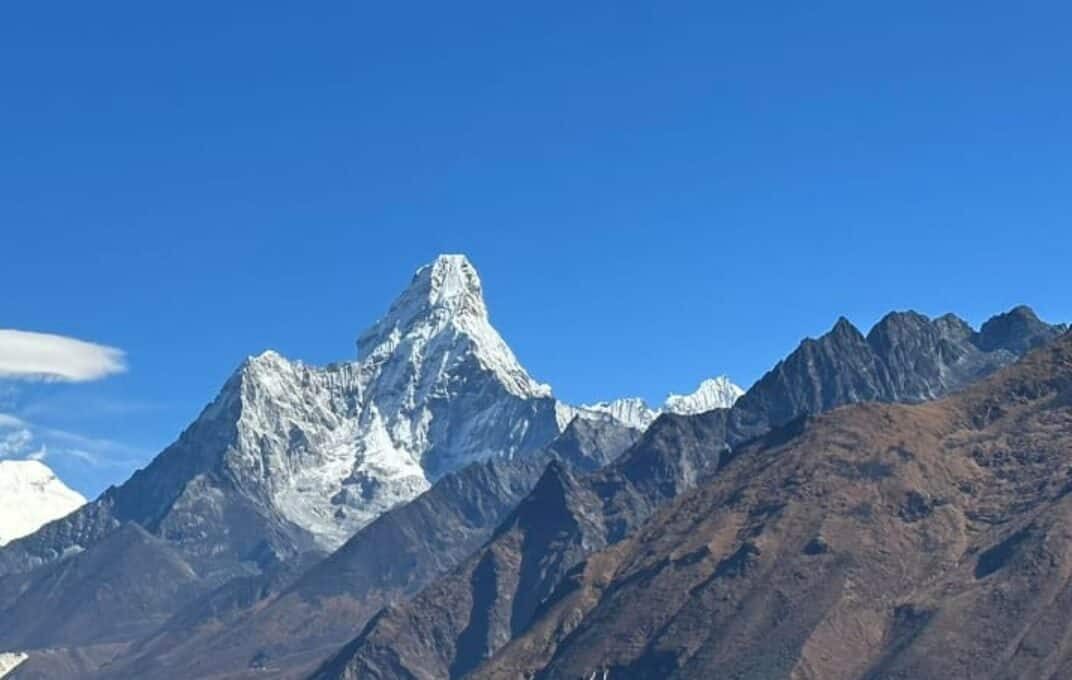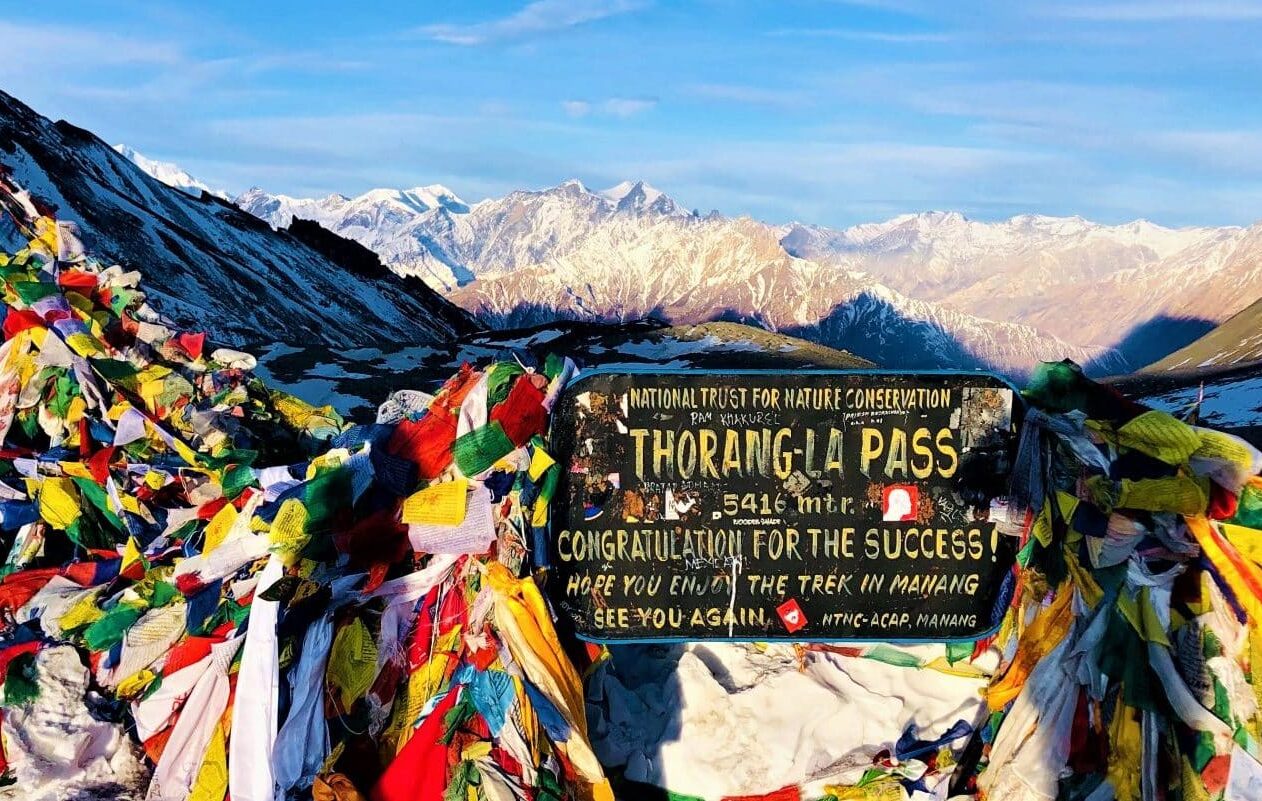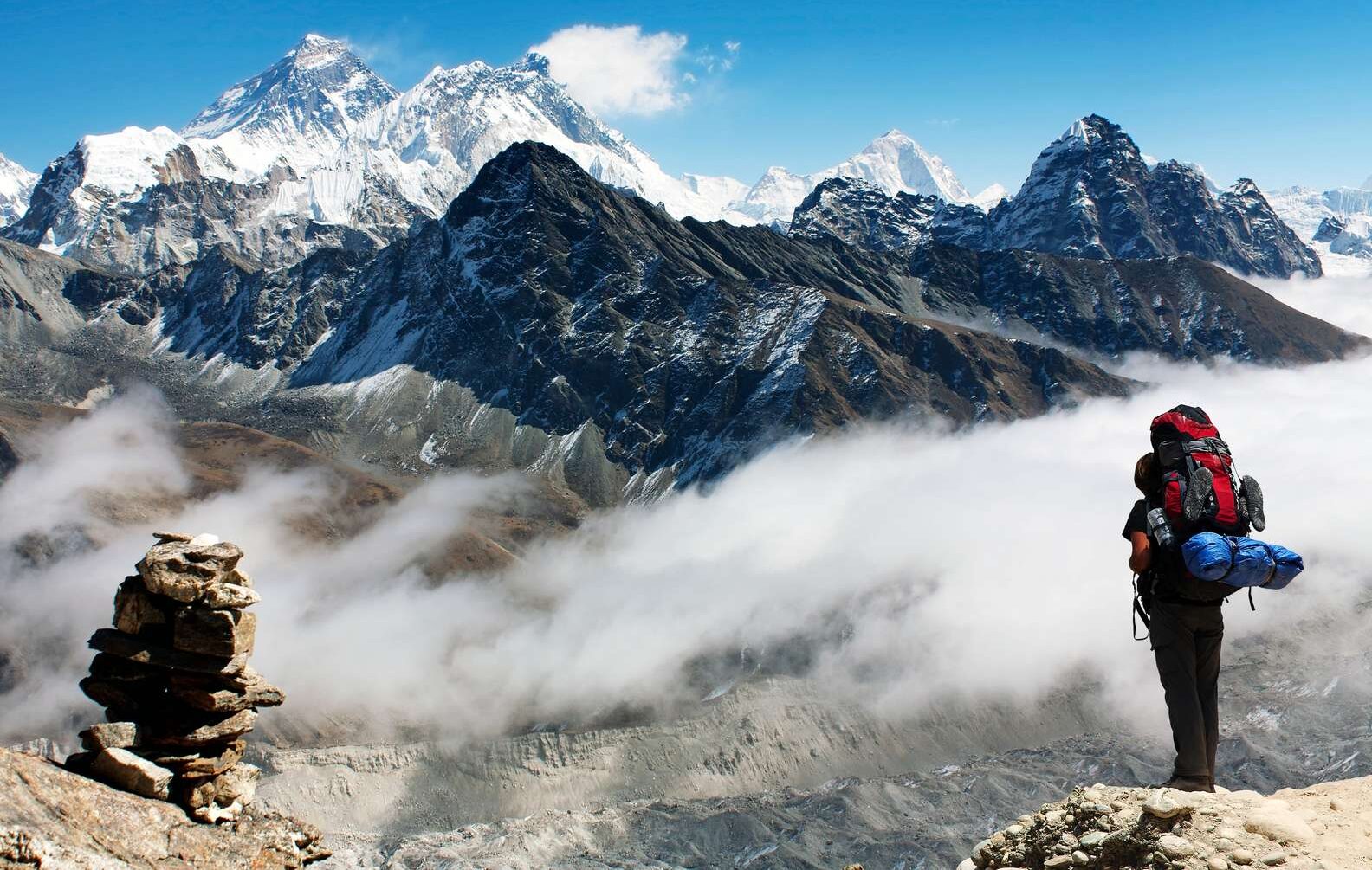Winter trekking in Nepal offers an unforgettable experience. From December to February, the Himalayan mountains transform into snow-covered wonders. With fewer crowds, clear skies, and breathtaking views, winter treks in Nepal allow you to embrace nature’s solitude. This season brings unique challenges and rewards for trekkers seeking a peaceful yet adventurous escape.
Trekking in Nepal is famous for its stunning landscapes, but winter adds a layer of magic to this experience. The snow-capped peaks, serene trails, and crisp mountain air create a distinct atmosphere that attracts those looking for something different. While winter trekking requires more preparation, the reward is the pristine beauty of the Himalayas with far fewer people around.
Advantages of Winter Trekking
Winter trekking offers several advantages compared to other seasons. First, the trails are less crowded, allowing you to connect with nature and avoid large groups. This solitude is perfect for trekkers who prefer quiet and reflective journeys. During peak trekking seasons, popular routes like the Everest Base Camp trek can get congested, but in winter, the trails are much quieter.
The cold winter air also clears the sky, providing uninterrupted mountain views. The lack of dust and haze reveals the full majesty of the Himalayas, making your trek visually rewarding. Snow-covered landscapes add to the beauty, transforming familiar trails into winter wonderlands. In many regions, the snow adds a level of tranquility that’s difficult to find during the busier trekking months.
Winter is also a time when cultural interactions become more meaningful. The villages along trekking routes are quieter, giving trekkers more personal connections with the local people. Trekking during the off-season allows for a deeper immersion into the local way of life, as there are fewer distractions from other tourists.
Top 7 Popular Winter Trekking Destinations in Nepal
1. Everest Base Camp Trek
The Everest Base Camp trek offers an unparalleled winter experience. Fewer trekkers mean less crowding at tea houses and on trails. The snow-covered peaks surrounding Mount Everest appear even more majestic in winter. Though the temperatures drop significantly, the journey rewards you with crystal-clear skies and breathtaking views of the world’s highest mountain. With the right gear and preparation, winter trekking to Everest Base Camp is an extraordinary adventure.
The lack of crowds during winter also means a more peaceful experience at iconic locations like Namche Bazaar and Tengboche Monastery. These famous stops along the trek are often bustling with trekkers in the fall, but winter offers a quieter, more reflective atmosphere. You can enjoy the beauty of these places at a slower pace, soaking in the culture and natural surroundings.
2. Annapurna Circuit Trek
In winter, the Annapurna Circuit trek offers unique challenges and incredible rewards. The higher passes, like Thorong La, may be snow-covered, making the trek more adventurous. Fewer trekkers on the trail provide solitude, but the cold weather also means you need to be well-prepared. However, the effort is worth it, as the Annapurna and Dhaulagiri ranges reveal themselves in all their glory under the clear winter skies.
While the Thorong La pass can be tricky in winter due to snow and ice, many trekkers still find this route manageable with the right equipment. The beauty of the Annapurna region in winter, with its snow-covered landscapes and peaceful villages, makes it a top choice for those looking for a longer, more challenging trek.
3. Langtang Valley Trek
Langtang Valley remains accessible in winter, though some areas may be covered in snow. This trek is known for its scenic beauty and fewer crowds during the winter months. The valley’s pristine beauty is enhanced by the snow-capped peaks surrounding it, offering a peaceful trekking experience. The Langtang Valley Trek is a great option for those looking for a shorter trek that still delivers stunning views and cultural immersion.
One of the unique aspects of the Langtang trek is the opportunity to witness the rebuilding efforts after the 2015 earthquake. The resilient communities along the route welcome trekkers warmly, and winter provides a chance to engage with the local people on a deeper level. The winter quiet in the valley adds to the sense of remoteness and serenity.
4. Ghorepani Poon Hill Trek
For a shorter winter trek, Ghorepani Poon Hill is ideal. Despite the cold, the sunrise views from Poon Hill are stunning, with snow-capped peaks glowing in the morning light. This trek is perfect for those new to winter trekking or with limited time. It is also less physically demanding than other treks, making it accessible to a wider range of trekkers, including families or those seeking a more relaxed pace.
Ghorepani Poon Hill is famous for its panoramic views of the Annapurna and Dhaulagiri ranges. In winter, the snow-covered peaks make the sunrise even more spectacular. While the trek is short, the reward at Poon Hill is worth every step. The teahouses along this route remain open in winter, and the local hospitality ensures a comfortable stay despite the cold.
5. Mardi Himal Trek
Mardi Himal is another excellent short trek for winter. It provides panoramic views of Machapuchare (Fishtail) and the Annapurna range. The trail sees fewer trekkers in winter, allowing you to enjoy the serenity of the mountains. The Mardi Himal trek is perfect for those looking to escape the crowds and experience the untouched beauty of the Annapurna region.
The trek follows a ridge that offers continuous views of Machapuchare, one of the most iconic mountains in Nepal. While the trek is less challenging than others, the views and peaceful trails make it a favorite among winter trekkers. The higher sections of the trek may have snow, adding to the beauty of the journey.
6. Jomsom-Muktinath Trek
The Jomsom-Muktinath trek provides a spiritual experience with the snowy landscapes of Mustang. The Muktinath Temple, revered by Hindus and Buddhists, looks magical in winter. Trekking through Jomsom’s arid landscape, covered in snow, is a rare and beautiful sight. This trek combines natural beauty with cultural significance, making it a unique winter experience.
The region’s distinct landscape, known for its dry, rugged terrain, contrasts beautifully with the snow that falls in winter. The Jomsom-Muktinath trek is less physically demanding than other routes, making it accessible to a wide range of trekkers. The spiritual significance of Muktinath, combined with the serene winter setting, creates a truly special trek.
7. Tamang Heritage Trek
Tamang Heritage Trek is ideal for winter explorers interested in both natural beauty and rich cultural experiences. The trail passes through traditional Tamang villages, where you can experience the locals’ way of life. Winter adds a layer of tranquility to this culturally immersive trek, allowing for personal connections with the Tamang people and their traditions.
The trek takes you through the stunning landscapes of the Langtang region, with snow-capped peaks in the distance. The Tamang people’s hospitality and the chance to witness their cultural practices make this trek a deeply enriching experience. Winter trekking here allows for a more intimate exploration of the region’s culture and history.
Weather and Climate Conditions
Winter weather in Nepal varies based on elevation. Higher regions experience freezing temperatures, often dropping below -10°C. Lower altitudes have milder days, with temperatures around 10°C. Snowfall is common above 3000 meters, and daylight hours are shorter, so planning each day carefully is essential. Understanding the local weather patterns is crucial for a safe and enjoyable winter trek.
In addition to cold temperatures, trekkers should be prepared for sudden changes in weather, especially at higher altitudes. Storms can bring heavy snowfall, so it’s important to stay informed about weather forecasts and remain flexible with your trekking plans. The shorter daylight hours mean starting your trek early each day is key to making the most of the sunlight.
Essential Gear and Equipment
Proper gear is crucial for winter trekking in Nepal. Layering your clothing is key to adapting to temperature changes. Insulated jackets, thermal underwear, and waterproof outer layers are essential. Sturdy, insulated boots with good grip are necessary for snowy paths. Trekking poles, crampons, and gaiters help with stability on icy trails. A four-season sleeping bag is also vital to staying warm during cold nights.
Additionally, a good quality backpack with a rain cover, a reliable headlamp, and spare batteries are important. A high-calorie diet is necessary to keep energy levels up, so bringing energy bars or trail mix is helpful. Winter treks demand more physical effort due to the cold and snow, so being prepared with the right gear makes all the difference.
Safety Considerations
Winter trekking presents challenges like altitude sickness, hypothermia, and avalanche risks. Safety is the top priority for winter treks. Monitor weather forecasts and seek experienced guides who are trained in altitude awareness. Avoid rushing to higher elevations, and ensure proper hydration to prevent altitude sickness. Carry essential equipment like oxygen cylinders and first aid kits to handle emergencies.
It’s important to recognize the signs of altitude sickness early and descend if symptoms worsen. Hypothermia is another serious risk in cold conditions, so wearing proper gear and staying dry is critical. Avalanches can occur on certain routes, so staying informed about avalanche-prone areas is vital.
Physical Preparation and Fitness
Winter trekking requires a good level of physical fitness. Prepare by incorporating cardiovascular exercises and strength training into your routine. Hiking or walking on varied terrain with a weighted backpack helps simulate the trek. Physical preparation is key to managing the challenges of a winter trek successfully.
Fitness training should start at least two to three months before your trek. Focus on building stamina through long-distance walking or jogging, and incorporate leg-strengthening exercises like squats and lunges. Mental preparation is also important, as winter conditions can be physically demanding and require a positive, determined mindset.
Accommodation Options
Accommodation during winter treks consists mostly of teahouses and lodges. Some lodges in higher regions may close during the cold months, so it’s essential to plan accordingly. In remote areas, camping may be necessary, but carrying proper gear ensures a comfortable experience during cold nights. Be sure to confirm lodging availability before embarking on your trek.
Most teahouses remain open during winter but may have limited services. It’s important to pack extra warm clothing and a sleeping bag rated for cold temperatures. While accommodations might be basic, the warmth of the local hospitality makes winter trekking in Nepal a welcoming experience.
Local Culture and Festivals
Winter trekking also offers a unique opportunity to experience local culture. The Mani Rimdu Festival, celebrated in the Everest region, usually takes place in November or December. You may also encounter other local winter festivals during your trek. Cultural immersion is one of the enriching aspects of trekking in Nepal, especially during the winter months.
During winter, the slower pace of life in the villages gives trekkers a deeper connection with the local communities. Whether it’s sharing stories over a cup of tea or observing a traditional festival, these cultural interactions add a rich layer to the trekking experience. Winter is also a time for local religious observances, which trekkers may witness along the way.
Transportation and Accessibility
Reaching the starting points of winter treks can be challenging due to road closures or flight delays caused by weather. Domestic flights to Lukla, for instance, are often subject to weather conditions. Careful planning helps to ensure a smooth journey to your trek’s starting point, minimizing any delays due to winter weather.
Booking flights or transportation well in advance is advisable during the winter months. Trekkers should also allow for flexibility in their schedule, as delays are more common in winter. Road conditions may also change rapidly, particularly in higher regions, so staying updated on local travel advisories is important.
Guided vs. Independent Trekking
Winter trekking in Nepal can be done independently, but it is highly recommended to go with a guide, especially in winter. The cold weather and snow make navigation harder, and guides provide invaluable support for safety. Experienced guides lead you through snow-covered paths, manage weather challenges, and ensure your safety.
A guide also brings local knowledge about the routes, conditions, and hidden risks that trekkers might not be aware of. Whether it’s navigating tricky passes or dealing with unexpected weather changes, a guide can make your trek not only safer but more enjoyable. For solo trekkers, hiring a guide provides a sense of security and companionship on the trail.
Permits and Regulations
Trekking in Nepal requires permits, even in winter. You’ll need the TIMS card (Trekkers’ Information Management System) and national park permits for most trails. Some areas may have seasonal restrictions, so it’s essential to stay informed about the relevant regulations before setting out on your trek.
In addition to these permits, certain regions may require special entry permits. Make sure all paperwork is in order before starting your trek to avoid delays. Winter permits are often the same as those during peak seasons, but it’s important to check for any winter-specific rules or changes in local regulations.
Environmental Responsibility
Winter trekking has a direct impact on the fragile Himalayan ecosystem. Always carry out your trash, minimize your environmental footprint, and avoid disturbing wildlife. Following Leave No Trace principles ensures that future generations can enjoy the beauty of Nepal’s wilderness. Trekkers should also be mindful of the delicate balance of local ecosystems, particularly during the winter season when resources are scarcer.
Respecting local customs and using environmentally friendly products helps preserve both the natural and cultural heritage of the region. Simple steps, like using reusable water bottles and avoiding plastic waste, contribute significantly to conservation efforts. Winter trekkers should also avoid overloading teahouses, as resources like firewood can be limited.
Conclusion
Winter trekking in Nepal offers a unique, serene experience that few adventurers get to witness. The beauty of snow-capped peaks and quiet trails makes the cold weather a small price to pay. Whether you’re seeking solitude, cultural immersion, or breathtaking mountain views, winter treks in Nepal deliver unmatched experiences.
At The Himalayan Treks, we are dedicated to providing safe, guided treks that allow you to explore the magic of the Himalayas in winter. Our experienced team ensures a memorable and well-prepared adventure, so you can focus on enjoying the journey. Book your winter trek today and discover the wonders that Nepal has to offer in the cold season



